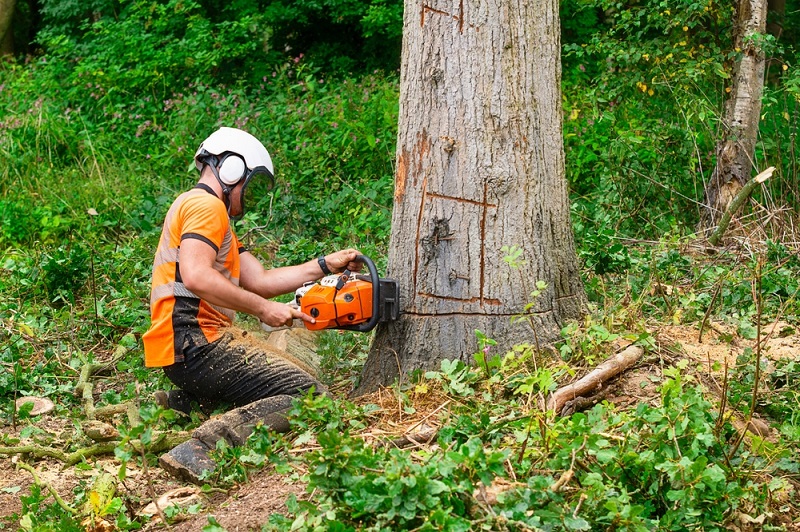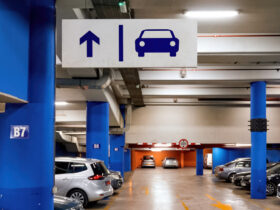Hey there, if you’re staring at a tree in your backyard that’s become more of a hassle than a highlight, you’re not alone. Tree removal is a common task for many Aussies, whether it’s to clear space for a new deck, deal with storm damage, or just keep your property safe from those overhanging branches. But here’s the thing: choosing the right equipment for tree removal isn’t just about grabbing the nearest chainsaw from Bunnings. It’s about safety, efficiency, and making sure you don’t end up with a bigger mess—or worse, a trip to the hospital. In Australia, where our landscapes range from urban Sydney suburbs to rural Queensland bush, tree removal comes with its own set of rules and considerations. Let’s dive into how you can pick the best tools for the job while navigating local regs and keeping things eco-friendly. We’ll cover everything from basic gear to pro-level machinery, all tailored to our Aussie context.
Understanding Tree Removal in Australia
Before you even think about equipment, it’s crucial to get the lay of the land—literally. Tree removal in Australia isn’t a free-for-all; it’s governed by a patchwork of local council regulations that vary by state and territory. For instance, in New South Wales, you might need a permit from your local council for removing trees over a certain height or those considered significant to the environment. Generally, trees taller than 3 metres or with a crown spread over 2 metres often require approval, especially if they’re native species like eucalypts or banksias that are protected under biodiversity laws. In Victoria, councils like those in Melbourne emphasize protecting urban canopy, so even small trees might need a nod if they’re in a heritage overlay area.
Why does this matter for equipment choice? Well, if you’re doing tree removal legally, you’ll often need to hire certified arborists who come equipped with the right tools. DIY tree removal is tempting, but skipping permits can lead to hefty fines—up to thousands of dollars—or even forced replanting. Plus, Australia’s unique flora means considering things like bushfire-prone areas in states like South Australia or Western Australia, where removing flammable trees like stringybarks can actually be encouraged for safety, but only with proper assessment.
Common reasons for tree removal Down Under include disease (think phytophthora dieback affecting jarrah trees in WA), storm damage from our wild weather, or urban development. Culturally, Aussies value our green spaces—think of the iconic gum trees in national parks—so tree removal often sparks community debates, especially if it’s for views or development. That’s why semantic topics like “sustainable tree management” or “native tree preservation” pop up a lot in discussions around tree lopping and stump grinding.
Types of Equipment for Tree Removal
Alright, let’s get to the heart of it: what gear do you need for effective tree removal? The equipment you choose depends on the tree’s size, location, and your experience level. For small jobs, like removing a young acacia in your Perth garden, basic hand tools might suffice. But for larger eucalypts in Brisbane backyards, you’ll want heavy-duty machinery to avoid risks.
Basic Cutting Tools
Start simple. A good chainsaw is the backbone of tree removal. Opt for models with at least 50cc engines for Aussie hardwoods—brands like Stihl or Husqvarna are popular here because they handle dense timbers like ironbark. For branches higher up, a pole saw extends your reach up to 4-5 metres, perfect for pruning before full removal. Don’t forget hand saws or pruning shears for finer work; they’re essential for clean cuts that prevent disease spread in native species.
If you’re dealing with smaller trees (under 5 metres), an axe or hatchet can help with felling, but pair it with wedges to control the direction—crucial in tight urban spots like Melbourne laneways.
Heavy-Duty Machinery
For medium to large tree removal, think beyond handheld tools. A wood chipper turns branches into mulch, which is gold for Aussie gardens battling dry soils. Stump grinders are a must post-removal; they chew through roots without digging up your lawn, and in Queensland’s subtropical climate, this prevents regrowth from invasive species.
Bucket trucks or cherry pickers allow safe access to tall trees, especially near power lines—a common issue in Sydney suburbs. For really big jobs, like removing a 20-metre gum, cranes or excavators with grapples ensure controlled lowering, minimizing damage to nearby structures.
Safety Gear: Non-Negotiable
No tree removal chat is complete without safety. Always kit up with helmets, gloves, chainsaw chaps, and eye protection. In Australia, Safe Work guidelines mandate this for pros, and you should too—tree work risks like falling branches are real. Rigging equipment, like ropes and pulleys, helps lower sections safely.
When choosing equipment, factor in the tree species. Native Aussies like figs or Moreton Bay figs have fibrous roots, so stump removal might need powerful grinders. For exotics like pines, lighter tools work, but check if they’re invasive—removal might be permit-free.
Hiring Professionals vs. DIY Tree Removal
Sure, you could rent equipment and tackle tree removal yourself, but is it worth it? In Australia, certified arborists from services like Jim’s Trees or The Tree Company bring expertise and insurance. They’re pros at navigating council approvals, which can take weeks—gather photos, arborist reports, and submit online.
Competitors like Bob & Ben The Tree Men in Sutherland Shire or Affordable Tree Service in Brisbane offer stump grinding and cleanup, often with eco-disposal options. Costs? Small tree removal runs $250-$950, medium $650-$1,500, large up to $3,500, varying by city—cheaper in Perth than Sydney.
DIY saves money but risks fines or injury. If the tree’s near boundaries, chat with neighbors—tree disputes are common in our close-knit communities.
Questions and Answers: Common Questions About Tree Removal in Australia
Got questions? You’re not the first. Here’s a quick Q&A on popular queries from Aussies dealing with tree removal.
Q: Do I need council approval for tree removal in my backyard?
Ans: Yes, in most cases. Local councils require permits for trees over 3-5 metres or native species to protect biodiversity. Check your council’s website; exemptions apply for immediate hazards like after a cyclone.
Q: How much does tree removal cost in Australia?
Ans: It varies by size and location: $250-$950 for small trees, up to $3,500+ for large ones. Factors like access and stump removal add up—expect higher in urban areas like Melbourne.
Q: What trees can I remove without permission?
Ans: Small ones under 3 metres or certain invasives like camphor laurels often don’t need permits, but always confirm with your council. Native trees like koala habitats in NSW are strictly protected.
Q: Is tree removal safe to do myself?
Ans: Only for small trees with proper equipment. For anything larger, hire pros—Safe Work Australia guidelines highlight risks like electrical lines or unstable ground.
When’s the best time for tree removal in Australia?
Ans: Winter or dry seasons to minimize sap flow and wildlife disruption. In bushfire-prone areas, pre-summer removal reduces risks.
Conclusion: Your Path to a Successful Tree Removal in Australia
Wrapping this up, choosing the right equipment for tree removal boils down to assessing your tree’s size, species, and site while prioritizing safety and compliance. From chainsaws for basic cuts to chippers and grinders for cleanup, the tools you select can make the difference between a smooth job and a headache. Remember, Australia’s regs protect our unique environment, so start with council checks and consider pros like Jim’s or local arborists for peace of mind.
Next steps? Inspect your tree for issues, get quotes from at least three services, and apply for permits early. If it’s a native, explore alternatives like pruning first. By doing tree removal right, you’re not just clearing space—you’re contributing to safer, greener communities. Ready to act? Head to your local council site or call an arborist today. Your backyard will thank you!











Leave a Review